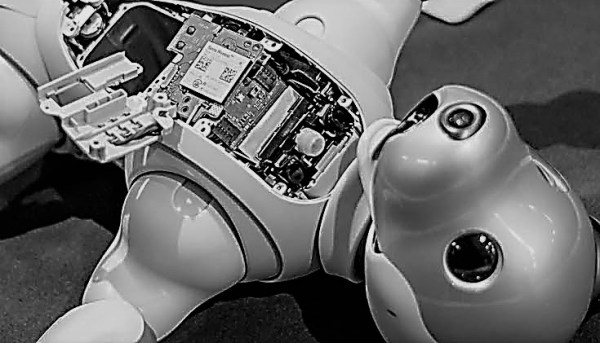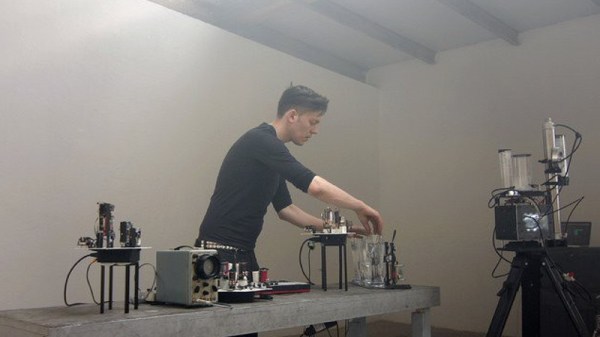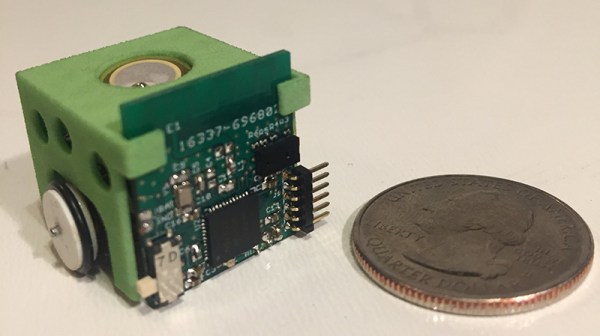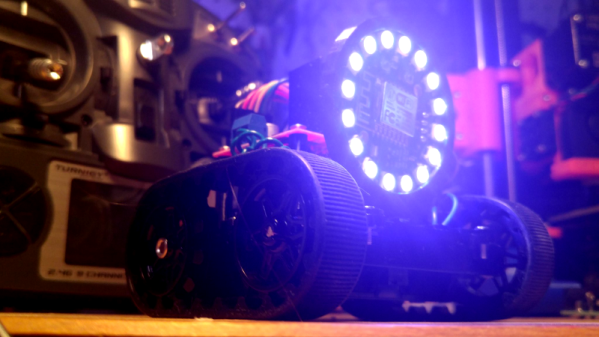In a complete surprise, Sony has moved to release the latest version of their robotic dog series, Aibo, in North America. The device is already out in Japan, where there are a number of owner’s clubs that would rival any dedicated kennel club. Thanks to the [Robot Start] team, we now have a glimpse of what goes into making the robotic equivalent of man’s best friend in their teardown of an Aibo ERS-1000.
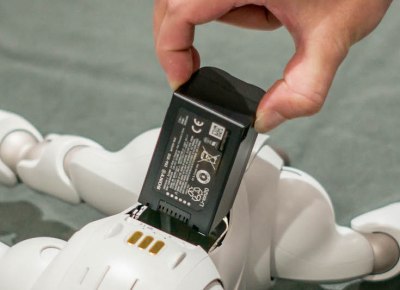
According to Yoshihiro of Robot Start, Aibo looks to be using a proprietary battery reminiscent of the Handycam camcorders. Those three gold contacts are used for charging on the rug shaped power base that Aibo will periodically return to in order to take a”nap”. There are a couple of square OLED screens behind those puppy dog eyes. They are full-color OLEDs somewhere in the one-inch ballpark. Between the screens is a capacitive touch sensor that wraps around to the top of the head that are also pressure sensitive. 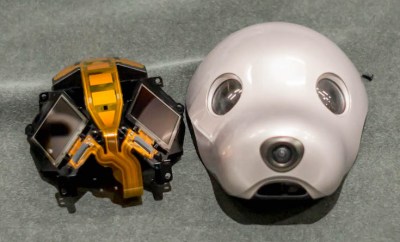
According to Sony’s press release, the fish-eye camera housed in Aibo’s snout is used to identify faces as well as navigating spaces.
Laying out all the major parts out together certainly drives home the complexity of the latest Aibo. It’ll be interesting to see the progression of this device as all of them come equipped with 4G LTE and 802.11 b/g/n WiFi that connect to Sony’s servers for deep learning.

New behaviors are supposed to download automatically as long as the device is under the subscription plan. While Sony has no current plans to integrate with any voice-activated virtual assistant, we can still look forward to the possibility of some expanded functionality from the Hackaday community.
For the rest of the teardown photos make sure to head over to [Yoshihiro]’s write up on Robot Start. Also just in case anybody cared to see what happens when the first generation Aibo ERS-111 from 1999 meets the 2018 Aibo ERS-1000, you’ll find the answer in the video below:
Continue reading “Teardown: Sony’s New Aibo Goes Under The Knife”

